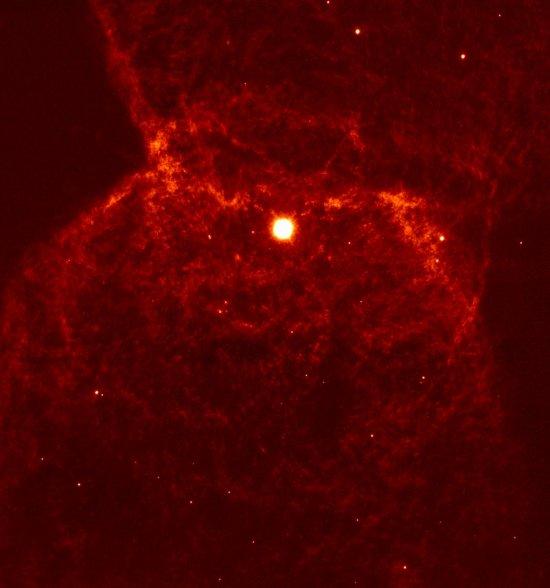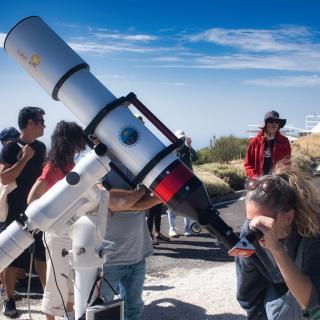An international team of scientists with members from the Institute of Astrophysics of the Canaries (IAC) have obtained an image with higher resolution than ever before of the planetary nebula NGC 2346, using the system of multi-conjugate adaptive optics (MCAO) on the Gemini South telescope, in Chile. This planetary nebula, at 2,300 light years from Earth, towards the constellation of Monoceros, is well known because of its shape, a butterfly or a sand-clock.
The new observations of this gaseous nebula show details of a size similar to that of our solar system. The team detected knots and filaments of molecular hydrogen, details which even the Hubble Space telescope has not yet been able to resolve.
“The MCAO system” explains Arturo Machado, a researcher at the IAC and of the CSIC (Higher Council for Scientific Research), “allows us to obtain images with very high spatial resolution en a much bigger field that with other present techniques. To perform tests of the new instrument on Gemini South an international call went out for observing proposals; among those selected was our proposal to observe the planetary nebula NGC 2346”.
The end of a life
NGC 2346 is a star in the final phase of its life cycle. At first it was a double star, each star having around twice the mass of the Sun, with the two orbiting about their common centre of gravity. The more massive of the two was the first to finish burning its fuel and it expanded converting itself into a red giant, which by now it has thrown off its outer layers, transforming itself into a white dwarf with a mass between 0.3 and 0.7 solar masses. Researchers believe that the bipolar nebula (with the butterfly shape) has been carved out by the two stars. They are close to each other than is Mercury to the Sun, and their orbital period is 18 days. It is not easy to work out the initial mass of the more massive star because of the mass which it has lost during its interaction with its companion.
“The molecular hydrogen in the bipolar lobes of NGC 2346 was already detected almost 30 years ago” as we are reminded by Letizia Stanghellini of the National Optical Astronomy Observatory (NOAO) of the United States, “although previous observations could only give a suggestion of the existence of a toroidal shape (like a doughnut). The filamentary structure observed by the team agrees with the mechanism which they had proposed, en which the hot bubble of gas which surrounds the central star suffers a drop in pressure, expands, and fragments in the gaseous envelope. The knots in the gas are probably due to a phenomenon which occurs in fluids, or gases, of different densities, when the lighter fluid presses against the denser. This is similar to what occurs when oil is poured into a glass of water.
Using computer models designed by Guillermo García Segura, of the National Autonomous University of Mexico (UNAM), and a former doctoral student at the University of La Laguna, it has been possible to show the expected interaction between the gases and how the gas should evolve on timescales of thousands of years.
The team is made up of researchers at the IAC, the University of La Laguna, the Autonomous University of Madrid (UAM) the Higher Council of Scientific Research (CSIC), Spain, and the National Optical Astronomy Observatory (NOAO).
Contacts: Arturo Manchado: amt [at] iac.es (amt[at]iac[dot]es), 922605239



